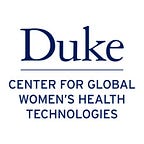Trickle Up Innovation: Director’s Blog
By: Nimmi Ramanujam with Ashley White and Megan Madonna
Research and development typically begin in high-income countries. As a result, it takes significant effort and funding to make these new innovations accessible in low- and middle-income countries. This ‘trickle down’ process can take years, if not decades, to reach the populations that need these life saving technologies. Even when they are made available, these devices may need specialized infrastructure such as constant electricity or on-the-ground skilled engineers to maintain them.
Trickle down innovation, such as medical equipment donations, is based on the premise that high income countries are the sole driving force for innovation. On the other hand, the idea of reverse innovation, also referred to as “trickle up innovation,” encompasses a process by which a product or service takes root initially in low-income countries with the potential to move up, and eventually displace established competitors.
The speakers in the Spring 2022 Global Health Leaders Seminar hosted by our Center have led the creation of innovative technologies that exemplify reverse innovation. Our January speaker, Stanford Associate Professor of Biomedical Engineering, Dr. Manu Prakash, developed the foldscope, a $0.50 foldable paper microscope that is making science more accessible through a low cost and a versatile design. Having reached over 1.5 million people, the foldscope is encouraging learners everywhere to explore their surroundings through global citizen science — key avenue for future trickle up innovations.
Our February speaker, Equalize Health CEO, Dr. Krista Donaldson, developed a number of innovations including the $80 ReMotion prosthetic knee to remobilize above-knee amputees. Their ReMotion knee exemplifies the “trickle up innovation” approach by containing best-in-class technology and being priced at far less than other prosthetics on the market.
Finally, our March speaker, Johns Hopkins Assistant Professor Dr. Soumyadipta Acharya, places reverse innovation at the center of his work, which focuses on developing technologies appropriate and feasible for public health interventions worldwide. One of his impactful innovations is OxyGen, a Novel Method of High Flow Portable Oxygen Supplementation.
We are excited to host these incredible speakers this spring and learn from their rich experiences with trickle up innovation. If you are interested in learning more or RSVPing for a Global Health Leaders Seminar hosted by our Center, please visit www.DukeGWHT.org/events.
